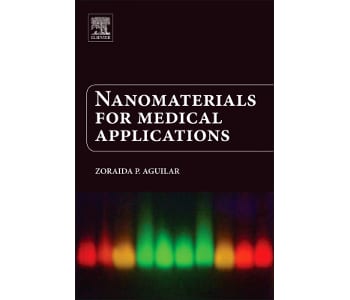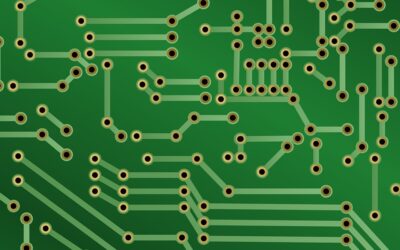 Nanomaterials for Medical Applications, 1st Edition
Nanomaterials for Medical Applications, 1st Edition
Z Aguilar
Hardcover / eBook
ISBN: 9780123850898 / 9780123850904
544 pages
€99.95
Click here for more information
Reviewed by Professor Bengt Fadeel, Karolinska Institutet, Stockholm
This book provides a “one stop shop” for information on nanomaterials for various medical applications, including not only a description of the synthesis and characterization of several important classes of nanomaterials, and their uses in drug delivery, medical imaging, diagnostics, and regenerative medicine, but also a discussion on toxicological issues, of paramount importance for the successful implementation of the emerging nanotechnologies.
This single-author volume is written by Dr. Zoraida P. Aguilar, Director of Research & Development at Ocean Nanotech LLC, a US company that specializes in the synthesis of dispersible nanocrystals. The scope of the book is impressive and the author has included not only a comprehensive bibliography with 200 or more references per chapter (close to 450 reference in the final summary chapter), representing an important added value of this book, but also step-by-step protocols for the synthesis and testing of various nanomaterials; the latter protocols are interspersed throughout the book although it would perhaps have been more convenient to collect these protocols in an appendix and/or as an online resource, subject to updates.
The book starts with a general introduction to nanotechnology, followed by six main chapters dealing with the synthesis and biomedical applications of nanomaterials, and one chapter on nanotoxicological issues and regulations, and a final summary chapter in which the main messages of previous chapters are recapitulated along with an extensive list of references for further reading. The book also contains a brief survey of the market potential and patent landscape in nanotechnology (see Introduction, and Conclusions). The book is suffused with an optimism that the nanotechnologies will revolutionize medical practice, but the author succeeds in achieving a balanced discussion of the many promises of nanomaterials as well as the attendant safety issues.
The chapter on nanomaterial synthesis and characterization includes a discussion on inorganic nanomaterials including quantum dots, gold and silver nanomaterials, organic materials, eg. liposomes, carbonaceous materials, and dendrimers, and emphasizes practical, hands-on issues. The chapter on biocompatibility and functionalization focuses on the conversion of nanomaterials into water-soluble (i.e. “biocompatible”) form and serves as an extension of the previous chapter, with emphasis on practical issues of synthesis along with several step-by-step protocols.
The following four chapters, on nanobiosensors, targeted drug delivery, nanomedical devices, and “nanopharmacology”, are all devoted to the application of nanomaterials in medicine. The scope is ambitious. Hence, the author discusses the use of nanomaterials in biosensors for use in in vitro diagnostic assays, and a discussion on nanomaterials for targeted drug delivery, arguably the holy grail of pharmacology. The latter chapter includes a discussion of the various factors to consider for nanomaterials that are intended for use as drug delivery vehicles, including physico-chemical properties such as size and surface charge and the various opportunities that exist for functionalization of drug-loaded particles in order to achieve active targeting. The clearance of particles by cells of the immune system is also highlighted, and the factors that govern the in vivo distribution of nanoparticles in the body. This chapter constitutes a key part of the present book and provides a nice overview of a very challenging topic.
The chapter on nanomedical devices includes an intriguing discussion on so-called nanorobots and “nanosurgery”, meaning “surgery” based on the use of laser beams that are employed to exert a controlled force to manipulate organelles and other subcellular structures; a better word for this procedure might be “manipulation” at the cellular and subcellular (or, nano-scale) level. In the same chapter, the author covers the important topic of chips and implants, and tissue engineering (regenerative medicine), a fascinating area of basic and clinical research, spanning from the material sciences to stem cell biology – an area that also raises important ethical questions.
The chapter on “nanopharmacology” covers a variety of topics ranging from nanomaterials for gene delivery, nanomaterials for immunomodulation, eg. in vaccine delivery, nanomaterials for thermal ablation (of tumor cells), and finally a section on nanomaterials for medical imaging. The latter topic probably deserves its own chapter as this is certainly an area of current great interest, but also an area in which nanomaterials have succeeded in translation to the clinic. The section on gene delivery is of course related to the previous sections on targeted drug delivery, and the two sections could be merged into one chapter; indeed, the previous chapter on targeted drug delivery certainly qualifies as “nanopharmacology” too. The chapter on “nanopharmacology” concludes with a brief, yet highly relevant discussion on “design trends” for individualized medicine; it is noted that safety issues should also be considered as part of the design of any medical product, including nanomedicines.
Finally, the chapter on nanotoxicology and remediation touches on several aspects of safety assessment of nanomaterials, with a survey of recent studies on carbonaceous nanomaterials, including carbon nanotubes and fullerenes, quantum dots, gold and silver nanoparticles, and superparamagnetic iron oxide nanoparticles or SPIONs. Regulatory issues are mentioned, and a short section on “remediation” is also included; here, remediation refers to the handling of accidental spills of nanomaterials in the workplace or research laboratory. Remediation of other environmental contaminants using nanotechnologies is not, however, covered in this context.
In sum, this ambitious volume succeeds in highlighting many of the current areas of interest in the field of nanomedicine, and benefits from a multi-disciplinary perspective and a balanced discussion of the many promises of nanomaterials in medicine as well the attendant safety issues. The book is recommended to young scientists entering into this exciting new field.














